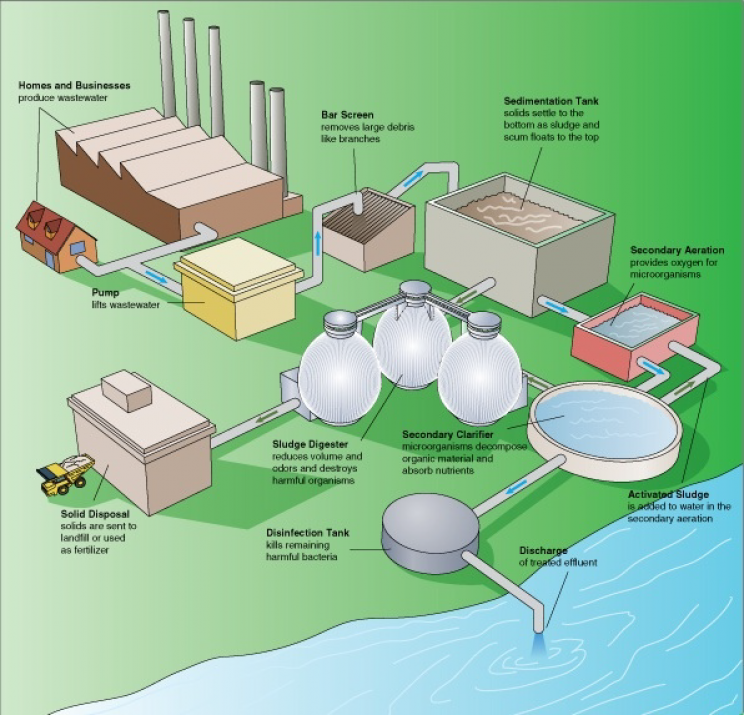

Alternatively a partial anaerobic digestion phase can be induced on water that is percolated through the raw waste, dissolving the readily available sugars, with the remaining material being sent to a windrow composting facility.īy processing the biodegradable waste either by anaerobic digestion or by composting MBT technologies help to reduce the contribution of greenhouse gases to global warming.
#Waste management treatment plant full#
This may either take the form of a full anaerobic digestion phase, followed by the maturation (composting) of the digestate. Some systems incorporate both anaerobic digestion and composting. These systems are often configured to produce a refuse-derived fuel where a dry, light material is advantageous for later transport and combustion. During this partial composting stage the heat generated by the microbes result in rapid drying of the waste. In the case of biodrying, the waste material undergoes a period of rapid heating through the action of aerobic microbes. There is no green energy produced by systems employing only composting treatment for the biodegradable waste. They break down the waste into carbon dioxide and compost. Here the organic component is broken down by naturally occurring aerobic microorganisms. The biogas can be used to generate electricity and heat.īiological can also refer to a composting stage. The "biological" element refers to either:Īnaerobic digestion harnesses anaerobic microorganisms to break down the biodegradable component of the waste to produce biogas and soil improver. Twin stage & upflow anaerobic sludge blanket digestion (UASB) anaerobic digesters It is a common misconception that all MBT processes produce RDF this is not the case, and depends strictly on system configuration and suitable local markets for MBT outputs. Systems which are configured to produce RDF include the Herhof and Ecodeco processes. RDF can be used in cement kilns or thermal combustion power plants and is generally made up from plastics and biodegradable organic waste. MBT can alternatively process the waste to produce a high calorific fuel termed refuse derived fuel (RDF).

Some systems integrate a wet MRF to separate by density and flotation and to recover and wash the recyclable elements of the waste in a form that can be sent for recycling. The mechanical element has a number of similarities to a materials recovery facility (MRF). It typically involves factory style conveyors, industrial magnets, eddy current separators, trommels, shredders, and other tailor made systems, or the sorting is done manually at hand picking stations. This either removes recyclable elements from a mixed waste stream (such as metals, plastics, glass, and paper) or processes them. The "mechanical" element is usually an automated mechanical sorting stage. Wet material recovery facility, Hiriya, Israel MBT should not be confused with mechanical heat treatment (MHT). MBT is also sometimes termed biological mechanical treatment (BMT), however this simply refers to the order of processing (i.e., the biological phase of the system precedes the mechanical sorting). The components of the mixed waste stream that can be recovered include: This component is either configured to recover the individual elements of the waste or produce a refuse-derived fuel that can be used for the generation of power. The sorting component of the plants typically resemble a materials recovery facility.

Twenty two facilities in the UK have implemented MBT/BMT treatment processes. These systems enable the recovery of materials contained within the mixed waste and facilitate the stabilisation of the biodegradable component of the material. The terms mechanical biological treatment or mechanical biological pre-treatment relate to a group of solid waste treatment systems.


 0 kommentar(er)
0 kommentar(er)
